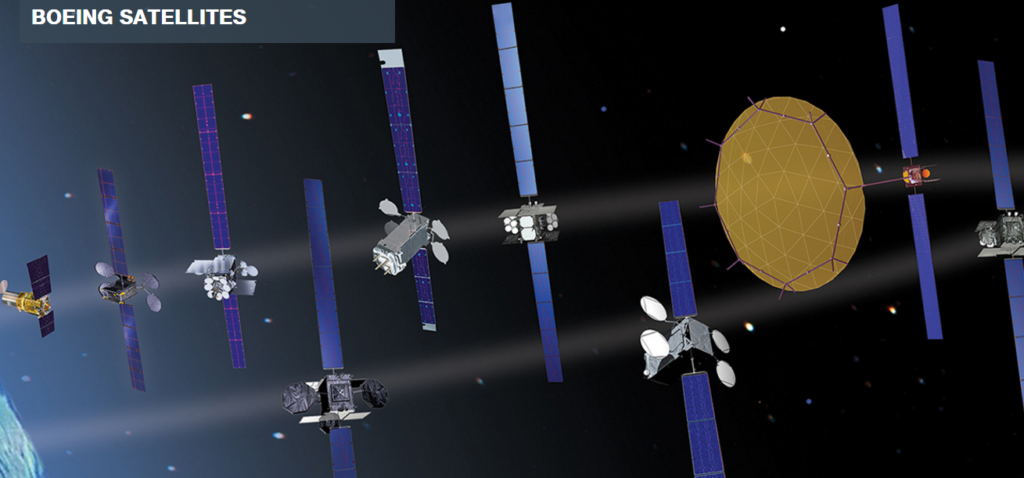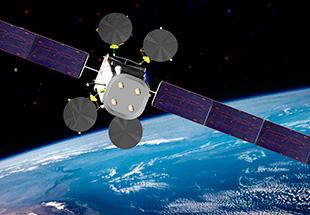 Boeing has been on board with 3D printing for quite some time now. While numerous aerospace companies have been embracing the technology, Boeing is one of the more creative – they’ve filed patent applications for the 3D printing of levitating objects and artificial ice, and recently provided an update on the 600 3D printed parts for their Starliner space taxis. Now the company is turning to 3D printing for the manufacture of satellites.
Boeing has been on board with 3D printing for quite some time now. While numerous aerospace companies have been embracing the technology, Boeing is one of the more creative – they’ve filed patent applications for the 3D printing of levitating objects and artificial ice, and recently provided an update on the 600 3D printed parts for their Starliner space taxis. Now the company is turning to 3D printing for the manufacture of satellites.
Boeing is a competitive producer of giant, expensive satellites, but they won’t stay competitive for long, according to satellite business chief Paul Rusnock, unless they make some big changes to their manufacturing processes. Their current models cost about $150 million each and take a lot of time to build, meaning that the company can create relatively few per year. For a long time, this wasn’t a problem, as satellite manufacturing was such a specialized market that there were few competitors. That’s not the case anymore.
3D printing has allowed for the fabrication of satellites that are smaller, lighter, simpler, and far less expensive, meaning that everyone from small companies to college students can build viable satellites for launch. While student groups aren’t likely to unseat Boeing anytime soon, growing numbers of young, smaller companies like Made In Space and SpaceX are beginning to compete with the larger, long-established players like Boeing for government contracts.
Cost reduction and speed are large parts of what makes 3D printed satellites so appealing, and the companies that make them so increasingly competitive. Compared to the flocks of 3D printed CubeSats being sent out into space, Boeing’s manually assembled satellites seem positively archaic. With SpaceX’s recent announcement that they plan to launch 4,424 Internet satellites into orbit in the next few years, Boeing can’t help but feel uneasy. While smaller companies haven’t yet started claiming, on a widespread level, the kinds of military and government contracts that Boeing has, it’s only a matter of time before Boeing’s clients start looking towards the more efficient, less expensive satellites that these newer companies can provide.
Boeing, as mentioned above, is plenty familiar with the advantages that 3D printing offers – it’s just a matter of adapting the technology to their satellite manufacturing processes. It takes less than two weeks to build an entire 737 aircraft, and the company’s goal is to incorporate that kind of speed into their satellite and spacecraft business. Since they’re typically building large satellites, they’re never going to achieve the kind of speed at which a CubeSat can be fabricated but, according to Rusnock, they can definitely accelerate their production schedules.
Boeing has already begun to implement 3D printing into satellite production at their Los Angeles facility, and is reassessing their designs to see where the number of parts can be reduced, further speeding up production.
“Our roadmaps are really focused on simplifying the overall architecture and design of satellites so they can be assembled more quickly,” Rusnock told the Wall Street Journal. “Making them simpler, easier to put together also reduces production glitches.”
3D printing isn’t the only technology that can make satellite production more efficient for Boeing: simulated testing and satellite-run self-check protocols can also cut back on time and cost. The shift to 3D printed, modular satellite designs is going to mark a large shift overall in Boeing’s satellite business. Modular units only last about half as long as the customized, hand-assembled satellites in which Boeing specializes, but several of the company’s clients have already expressed interest in more frequent launches with regularly upgraded technologies. Discuss in the Boeing forum at 3DPB.com.
Subscribe to Our Email Newsletter
Stay up-to-date on all the latest news from the 3D printing industry and receive information and offers from third party vendors.
You May Also Like
3D Printing Unpeeled: New Arkema Material for HP, Saddle and Macro MEMS
A new Arkema material for MJF is said to reduce costs per part by up to 25% and have an 85% reusability ratio. HP 3D HR PA 12 S has been...
3D Printing News Briefs, January 20, 2024: FDM, LPBF, Underwater 3D Printer, Racing, & More
We’re starting off with a process certification in today’s 3D Printing News Briefs, and then moving on to research about solute trapping, laser powder bed fusion, and then moving on...
3D Printing Webinar and Event Roundup: December 3, 2023
We’ve got plenty of events and webinars coming up for you this week! Quickparts is having a Manufacturing Roadshow, America Makes is holding a Member Town Hall, Stratafest makes two...
Formnext 2023 Day Three: Slam Dunk
I’m high—high on trade show. I’ve met numerous new faces and reconnected with old friends, creating an absolutely wonderful atmosphere. The excitement is palpable over several emerging developments. The high...


































